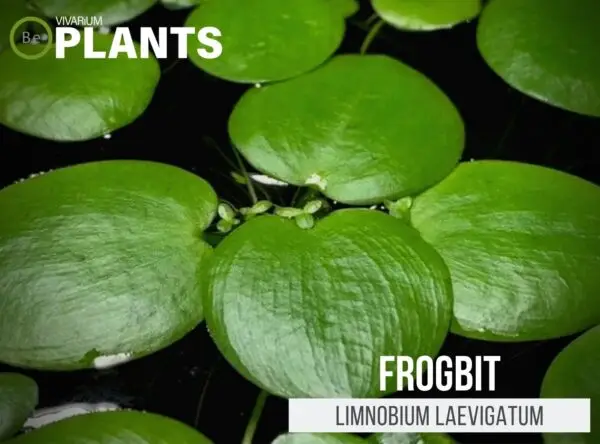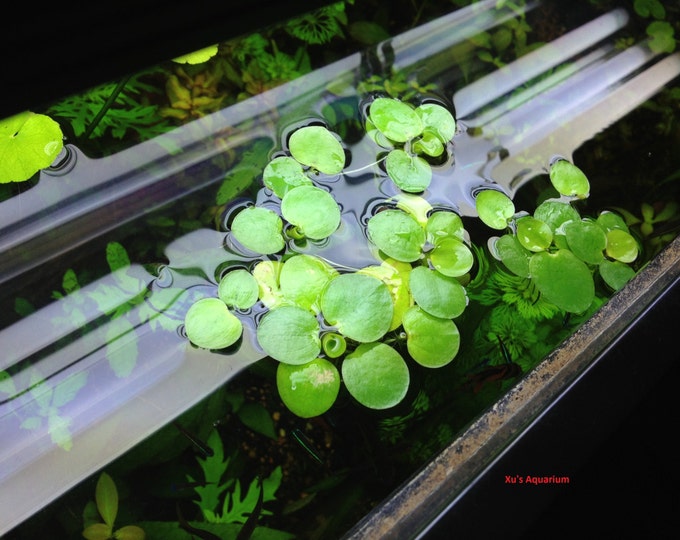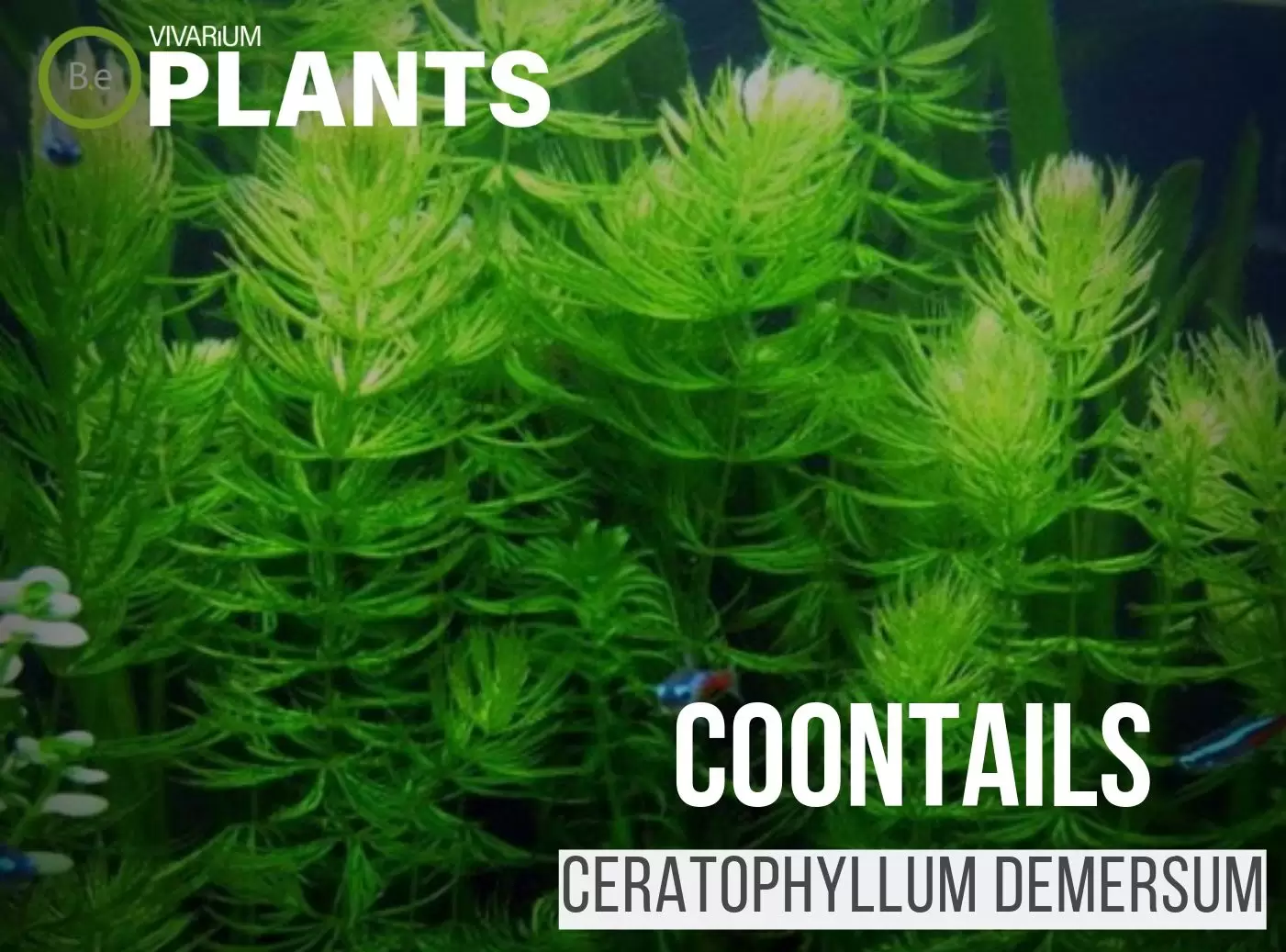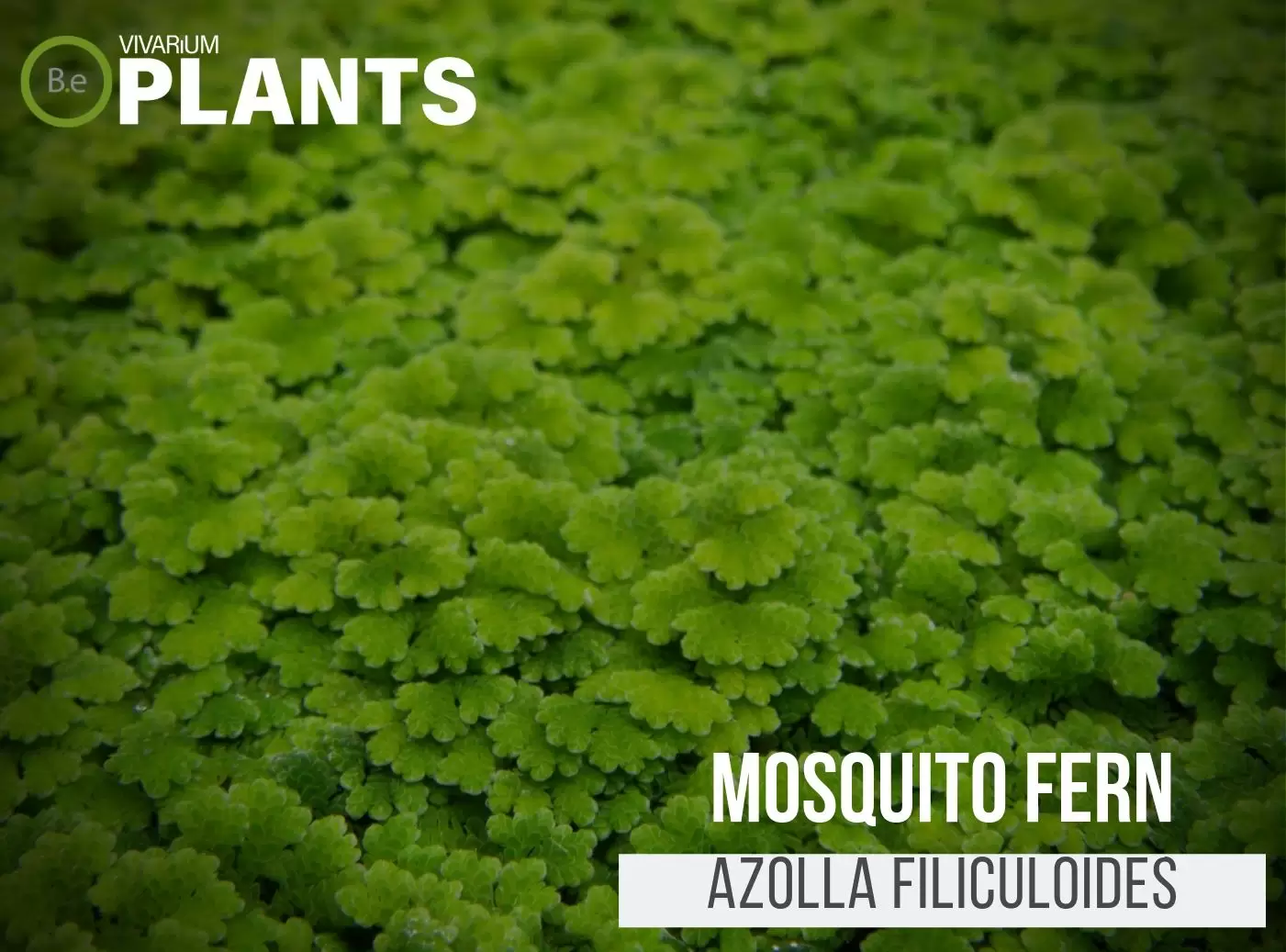Floating plants are a popular choice for adding a splash of color to aquariums and ponds alike. Frogbit or Limnobium laevigatum is a stunning floating aquatic plant that is native to many parts of the world. It is also quickly becoming a favorite among aquarists.
This article will explore the features of Frogbit, its uses in aquariums, and how to care for this beautiful plant. From its leaves to its flowers, Frogbit is sure to make a splash in any aquatic setup.
Table Of Contents:
ToggleWhat Is Frogbit?
Limnobium laevigatum, commonly referred to as frogbit is a floating water plant. It’s native to North America, Central America, and parts of South America.
It is an easily identified plant with its heart-shaped leaves, long roots, and ability to float and spread across the surface of the water. It is easy to come by, seen in any pet store or online and is a great starter plant for all levels of experienced keepers.
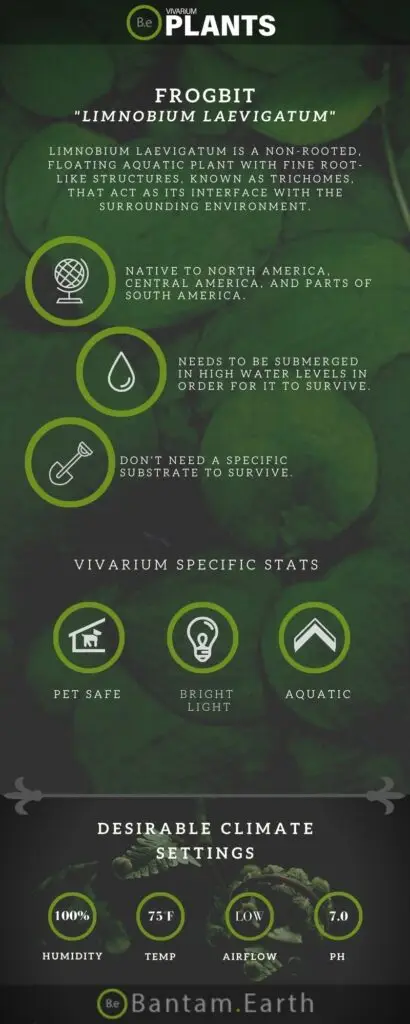

Frogbit Facts
Frogbit is a breeding plant for many species of fish and invertebrates, and as such can be seen as a great source of food or shelter for smaller creatures.
These plants are mainly grown due to their ability to oxygenate the water since they breathe in carbon dioxide from the surrounding habitat and release oxygen.
This makes them a great show-stopper in the aquarium while also providing a function in the habitat.
Description
Limnobium laevigatum is a non-rooted, floating aquatic plant with fine root-like structures, known as trichomes, that act as its interface with the surrounding environment.
It grows between 4 to 8 inches in height, its leaves can grow to be large, and its shoots can reach up to 3 inches across.
Frogbit sports heart-shaped leaves which give them an attractive look and its trichomes are bright green in color it even has the ability to bloom white and pink flowers in the right conditions.
Habitat
Frogbit is found in its native habitat of freshwater streams and rivers with slow-moving currents.
Its primary preferred environment is one where there are many aquatic species and organisms for them to compete with for resources.
Normally these environments are a mix of hardtops and substrates with stagnant water.
pH Preference
Limnobium laevigatum prefers a low range of pH, anywhere from 6.5 to 7.5 is best.
Vivarium Type
Frogbit is an aquatic floating plant that can thrive in a wide variety of vivariums. In freshwater aquariums, Frogbit can provide a unique aesthetic to the tank by creating a floating carpet of foliage at the surface.
In paludariums, Frogbit can be planted in shallow water areas with land, or even in the soil of the land area.
In ripariums, Frogbit can be placed at the water’s edge, or in areas of shallow water to provide a lush and natural look.
Regardless of the type of vivarium, Frogbit is sure to make an eye–catching addition to any tank.
Vivarium Placement
Frogbit is solely a partially submerged plant, it needs at least one-half of its structures above the water surface in order to flourish.
It can be placed around the perimeter of the tank and installed in a substrate with some rocks attached to the roots for beginners to help the plant adhere to the substrate and gain nutrients for growth.
Substrate
Frogbit prefers an aquatic substrate made of clay, silt, or sand with some rocks and wood around it. The roots of this plant will dig into the substrate looking for food and nutrition.
While they don’t need a specific substrate to survive, they do benefit from having a medium that helps retain some of the beneficial bacteria and food that they need.
Lighting
Frogbit requires a decent amount of light to thrive, but it should not be exposed to too much direct light. Placing frogbit in aquariums with aquatic lighting sources such as incandescents and T-5 fluorescent lighting is the best way to go.
Also, ensuring the lights are pointed in the direction of the plants will help keep a good environment for the plant to grow.
Water Requirements
Frogbit plants can grow in a wide range of water conditions. It does best in water that is between 68–82°F (20–28°C), with a pH between 6.5–7.5.
It prefers water that is slightly acidic but can tolerate a range of pH levels. Frogbit should be planted in an area with plenty of light and gently moving water, as this will help to keep the plant healthy and promote growth.
Additionally, the water should be kept clean and free of debris, as this can impede the growth of the plant.
Buy Frogbit
When looking to purchase Frogbit, there are a few key indicators you should look for. Buying the best quality plant will help give you the best shot at growing the fern successfully.
The floating plant should be snail free along with any other type of pest. The source of Limnobium laevigatum will usually be sold in small clumps, ready for you to propagate.
The batch should arrive fairly moist and with vivid colors. Try to stay away from sources that provide dried-out or dull-looking plants.
Click the image below to find out more about the current price and other relative info:
Frogbit Care and Propagation
Frogbit can be propagated using trimmings of-submersed stem or branch. These cuttings should be covered with a lid and consistently misted until the roots begin to develop.
Once the trimmings have developed new growth or roots, they can be carefully introduced back into their respective environment.
How to grow
Frogbit is a very easy plant to grow if the conditions are right. The plant should have plenty of water, enough light, and nutrition.
Although in the wild, frogbit’s pH tends to be a bit acidic, in the vivarium, a more neutral pH level of 6.5-7.5 should suffice.
A low level of CO2 can also be helpful. Adding aquatic fertilizers every two weeks can also be beneficial for the health of the plant.
Watering
Frogbit needs to be submerged in high water levels in order for it to survive. Also, regular water changes are necessary in order to provide the plant with fresh, clean water.
Generally, keepers recommend 10-20% of water be changed every two weeks. A dedicated water filter system can be beneficial in keeping the water clean and providing much-needed oxygen to the water.
Plants Similar To Frogbit
Even though some hobbyists enjoy sticking to a specific theme when building an enclosure, that does not mean that only one type of plant must be used. Adding diversity and versatility is crucial to creating a captivating vivarium.
Mix up the look of your vivarium with different flora that can easily co-exist in the same types of environment. Not only will it be more pleasing to the eye, but it will also make the tank look more realistic.
Furthermore, if for some reason you are having a hard time getting your hands on this plant… Here are some other options that may do well with or in place of Limnobium laevigatum:
Conclusion
Limnobium laevigatum, or Frogbit, is a great way to provide both aesthetics and function to any vivarium. It’s an eye-catching and vibrant addition, while also being an important part of the ecosystem within the tank.
While it’s easy to care for and propagate, some maintenance is required in order to keep it alive and thriving, including regular water changes and plenty of nutrition for it to grow.
Frequently Asked Questions
Yes, frogbit is a good aquarium plant because it is easy to grow and can help remove nitrates from the aquarium, providing a natural way to filter the water. It is also an attractive floating plant that adds visual interest to the aquarium.
Yes, frogbit can deplete oxygen in an aquarium if it is not maintained properly. It grows rapidly, taking up oxygen and nutrients in the water, and can eventually lead to anoxia (low oxygen levels) if left unchecked. Proper management, such as removing excess frogbit, is necessary to ensure enough oxygen is available for aquatic life.
Frogbit spread can be quite rapid, with the plant‘s roots and runners able to cover up to a half–metre of space in one year.
The benefits of Frogbits include:
• Able to absorb up to 10x their weight in water, meaning less water runoff
• Provide habitat for beneficial microbes and aquatic life
• Serve as natural filters for water
• Stabilize banks and canals to help prevent flooding
• Helps reduce sedimentation in bodies of water
• Help provide supplemental oxygen to water systems
• Protective cover for waterways, keeping water cooler in the summer and warmer in the winter
No, frogbit and duckweed are not the same. Frogbit is a small, circular floating plant that has rounded, bright green leaves and long, thin root filaments, while duckweed is a small, free–floating aquatic plant that has tiny, flat leaves with a single root coming from the middle of the bottom surface. The most obvious difference between the two is that frogbit is larger than duckweed.
Yes, frogbit (Limnobium laevigatum) is considered an invasive species in some areas.
